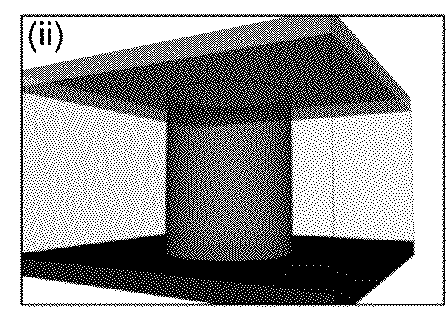Methods for resistive switching of memristors
- Summary
- Abstract
- Description
- Claims
- Application Information
AI Technical Summary
Benefits of technology
Problems solved by technology
Method used
Image
Examples
example 1
Isothermal Switching and Detailed Filament Evolution in Memristive Systems
[0080]Filamentary memristive systems tune their resistance state through the modification of nanoscale conduction channels (see, e.g., Yang J J et al., “Memristive devices for computing,”Nat. Nanotechnol. 2013 January; 8:13-24; Waser R et al., “Redox-based resistive switching memories—nanoionic mechanisms, prospects, and challenges,”Adv. Mater. 2009; 21(25-26):2632-63; and Waser R et al., “Nanoionics-based resistive switching memories,”Nat. Mater. 2007; 6(11):833-40). Such memristive systems or memristors are leading candidates for the future of digital memory storage and are believed to enable entirely new approaches to circuitry and computation (see, e.g., Burr G W, “Overview of candidate device technologies for storage-class memory,”IBM J. Res. Develop. 2008 July; 52(4.5):449-64; Pickett M D et al., “A scalable neuristor built with Mott memristors,”Nat. Mater. 2013 February; 12:114-7; and Jo S H et al., “Na...
example 2
Thermal Derivation of the Resistive Model Equations
[0109]To gain further insight into the governing thermal physics and explore this phenomenon, we developed a first principles heat flow model. In steady state, Joule heat is generated uniformly in a cylindrical conducting filament and flows out both vertically through the electrodes and radially through the surrounding oxide: QTot=IV=Qr+Qz (see FIG. 3A).
[0110]In steady state, Joule heat is generated uniformly in a cylindrical conducting filament and flows out both vertically through the electrodes and radially through the surrounding oxide: QTot=IV=Qz+Qr. Integrating vertical heat determines Qz, but requires knowledge of the temperature profile within the filament. Solving the heat equation in cylindrical coordinates as a function of radius r (Incropera FP, “Fundamentals of Heat and Mass Transfer,” 6th ed. 2002: John Wiley & Sons) and with uniform heat generation gives the following:
[0111]T(r)=σV2rF24dO2kF(1-r2rF2)+TS,(Eq.4)...
example 3
Discussion of Filament Ruptures
[0128]Filament ruptures have been observed in TEM experiments, as well as predicted by finite element simulations. In contrast, the model presented herein predicts a ‘quasi-uniform’ depletion of oxygen vacancies in the conducting filament, as opposed to the localized depletion associated with ruptures. In fact, the model presented here is consistent with ruptures, and predicts them to occur, however we believe this phenomenon takes place at much later stages of OFF / RESET switching. Below, we present a simple thermal / electrical experiment that we believe clearly demonstrates this viewpoint in our data. The validity of this viewpoint can be tested by considering the difference in power required to switch the same filament configuration ON or OFF. FIG. 8 shows schematics of the filament during ON state heating (SET switching, top schematic), OFF state switching (RESET switching, center schematic), and non-rupture OFF heating (bottom schematic).
[0129]It is...
PUM
 Login to View More
Login to View More Abstract
Description
Claims
Application Information
 Login to View More
Login to View More - R&D
- Intellectual Property
- Life Sciences
- Materials
- Tech Scout
- Unparalleled Data Quality
- Higher Quality Content
- 60% Fewer Hallucinations
Browse by: Latest US Patents, China's latest patents, Technical Efficacy Thesaurus, Application Domain, Technology Topic, Popular Technical Reports.
© 2025 PatSnap. All rights reserved.Legal|Privacy policy|Modern Slavery Act Transparency Statement|Sitemap|About US| Contact US: help@patsnap.com



